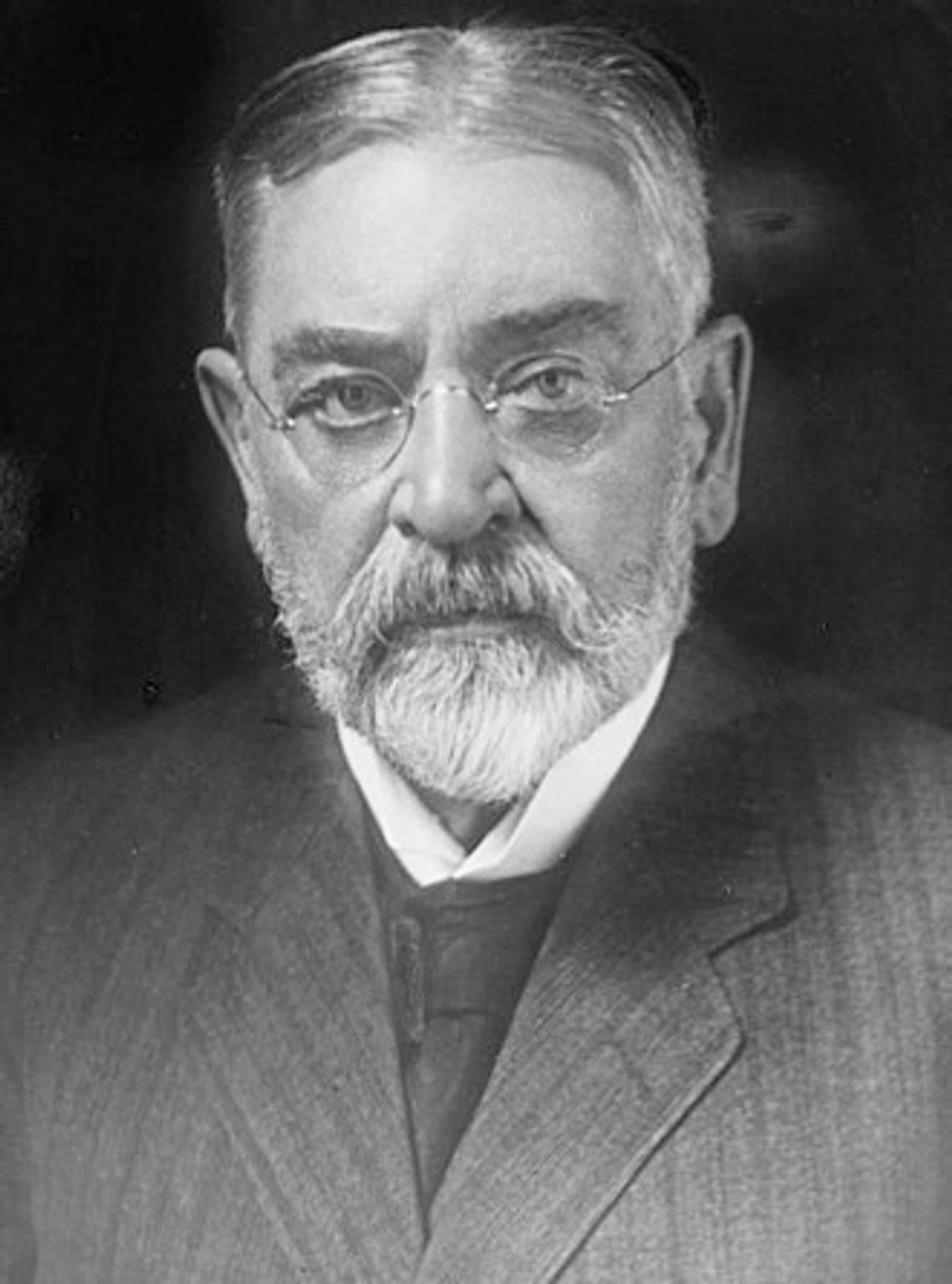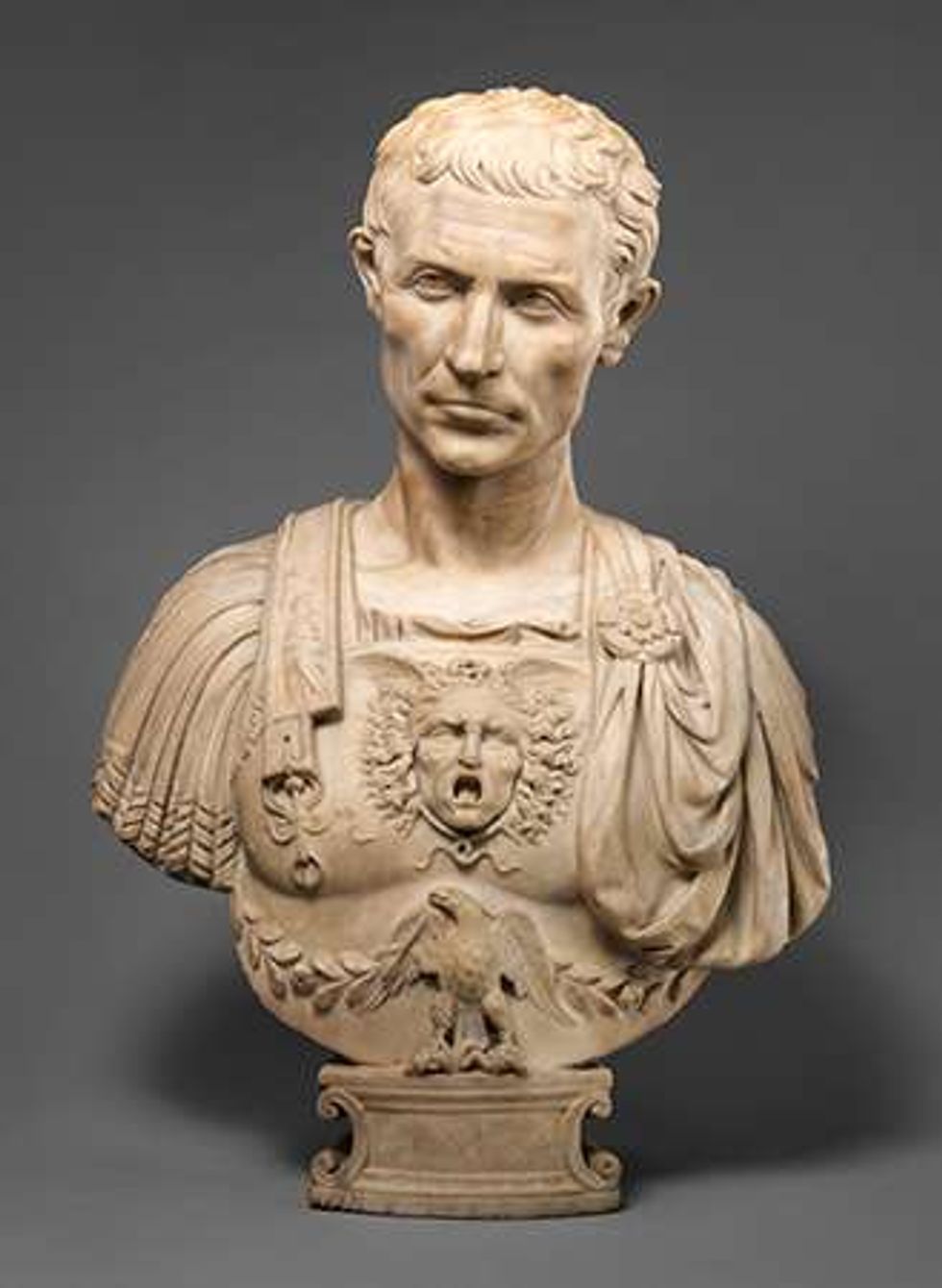History is a set of lies agreed upon."
-Napoleon Bonaparte
Humans are fascinating. We are a play, at the same time a comedy and a tragedy. Perhaps that is what I've always found so fascinating about history. The greatest stories are the ones that are true and, as a great lover of stories, I see no difference between Hercules or James Bond and Charlemagne or George Washington. Many of the greatest stories in history have been blown up, written in books and taught in schools, made into blockbuster movies or HBO specials starring Daniel Day-Lewis or Mel Gibson.
But, I've always found that some of the most interesting stories from history are the ones that slip through the cracks, things you won't learn about in school and probably won't rake in the big bucks as movies. So I thought it might be fun to share a few of my favorite little-known stories from history.
This is going to be in two parts, each with five stories. This is Part I.
1. Ota Benga, the Man in the Monkey House
In 1904, Ota Benga, a native of the Congo (then controlled by the Belgian King Leopold) and member of the Mbuti people, was part of a display of exotic (meaning non-white) peoples from around the world at the St. Louis World's Fair. He had been brought to America by a man named Samuel Phillips Verner through a series of shady and probably illegal business dealings.
Verner said Benga was part of the Pygmy tribe in Africa and upped the potential draw by claiming he was also a cannibal. Verner pointed to Benga's teeth, which had been sharped to triangle-shaped points, as evidence of him being a cannibal, though this is entirely unsubstantiated. Benga's teeth had, in fact, been filed as part of a cultural ritual that was unconnected to cannibalism.
After the Fair ended, Verner rented Benga first to the American Museum of Natural History and then to the New York Zoological Gardens, better known today as the Bronx Zoo. There, he was displayed
for public view at the famous Monkey House. Even after Benga finally left the zoo, he was stuck in the United States, far away from home, and subjected to the racial discrimination faced by blacks in the South. Benga was the object of great pity as he was taken in as a ward by a number of prominent black citizens including patrons of the historic Howard University.
Eventually, unable to raise the number of funds needed to return to Africa, Benga began to suffer from depression and signs of post-traumatic stress disorder (PTSD). On March 20, 1916, while living in Lynchburg, Benga took his own life, a gunshot wound to the heart. He is buried in White Rock Cemetery in Virginia.
Even today, we don't know Benga's real age (he's believed to have been born around 1883) or even, for certain, his real name. Back in Africa, he had a wife and two children, all of whom are believed to be killed by a rival tribesman, although the sources on this were mostly supplied by Verner, who was less than a reliable source. Benga's life, while a fascinating episode that bears little note today, is one of archaic racial beliefs, the pseudo-science known as eugenics, nationalism and imperialism. His was, by far, not the only life shattered by these ideals but one which seems especially inhumane and yet, largely forgotten by the world.
To Learn More Read: Spectacle; The Astonishing Life of Ota Benga by Pamela Newkirk
2. Robert Todd Lincoln and the Dreams of Dead Presidents
Robert Todd Lincoln was the eldest son of President Abraham Lincoln. A largely successful businessman and politician, the younger Lincoln has lived in the shadow of his father, the Great Emancipator. Because of this, he has been largely relegated to the footnotes of history, as has a fascinating series of seemingly supernatural events connecting to not one, not two but three different presidential assassinations.
In 1865 President Lincoln told members of his inner circle that he had experienced an eerie, and seemingly prophetic, dream. Lincoln said that in his dream he was walking through the White House surrounded by crying mourners. When he located a casket flanked by two soldiers, he asked one of them who was dead in the White House. A soldier responded that it was the president himself who had died. The soldier then told him that the president had met his fate by an assassin's bullet. Of course, 
Years later, in 1881, the younger Lincoln was serving as Secretary of War to President James A. Garfield. Alerted by a dream similar to Lincoln's, Garfield summoned Secretary Lincoln to meet him at the Baltimore and Potomac Railroad Station when the president arrived in Washington D.C. On July 2, as he and Lincoln met at the station, Garfield was shot by Charles Guiteau, a disgruntled job seeker. Two months later, Garfield died from his wounds. Guiteau was hanged five months later.
In 1901 President William McKinley is said to have had the same precognitive dream as Lincoln and Garfield. By that time, Robert Lincoln had settled into private life and attended the Pan-American Exposition in Buffalo, New York on the invitation of McKinley. There, McKinley was shot and killed by the anarchist Leon Czolgosz.
Involved in some way in the deaths of three presidents, it is said that Robert Todd Lincoln would never accept another invitation from a president again, openly admitting to the pattern that seemed to appear throughout his life. He died in 1926 at the age of 82.
To Learn More Read: Giant in the Shadows: The Life of Robert T. Lincoln by Jason Emerson
3. Joan, the Pregnant Pope
Now commonly believed to be the work of legend, the name of Pope Joan belongs in a class along with King Arthur, Robin Hood, and Ragnar Lothbrok. We simply can never know if they're real or not. We now tend to lean towards fiction where our ancestors often believed these legends to be fact. For the longest time, Pope Joan was very much a real figure.
So who was she? According to the legends, Joan was a woman who had entered the Catholic Church by disguising herself as a man, taking the name John Anglicus. It is believed she was German and highly educated. Eventually, Joan rose to the highest position in the church, the office of Pope, elected around 855. In the Middle Ages, this was a role of immense power and Joan would have amassed more influence than any other woman in her time.
Joan is said to have reigned under the name Pope John VIII. Joan was said to have taken on a series of lovers who, both before and after her ascension to the Holy See, who was bound to keep secret 
At some unknown point, Joan became pregnant by an unknown man. During a papal procession, before all of Rome, Pope John collapsed with contractions. To their horror, the people learned he was a she and she was in labor. It is said that Pope Joan met her fate that day as she was killed, either by stoning or by being dragged behind a horse. The street where Pope Joan is said to have died was long known as Vicus Papissa, or "street of the female pope" and it was intentionally avoided by later popes.
Pope Joan's story didn't appear until the 13th Century. Some who believe she was a real claim that the absence of mention before that time was because of the Vatican, so embarrassed for being deceived by a woman, allegedly destroyed all mention of Pope John VIII. For centuries, people all over believed the story of the female pope. However, most mainstream scholars believe she was entirely fictional. Still, we can never know for sure and one finds themselves rooting for the legend to be true. It's that cool a story.
To Learn More Read: Pope Joan: The Indestructible Legend of the Catholic Church's First and Only Female Pontiff by Charles River Editors
4. The Real Lone Ranger
The world was first introduced to the "Lone Ranger" and his sidekick Tonto on a radio show in 1933. From there, the Old West crime fighter appeared as the central figure in a popular television show as well as multiple comic book series and movies, most recently a 2013 film starring Armie Hammer and Johnny Depp. The Lone Ranger, atop his loyal horse Silver, is a staple of American culture but few know the story of the real-life man behind the mask. The reason for this anonymity is simple and sad; the real life Lone Ranger was a black man.
 Bass Reeves was born into slavery in 1838 in Arkansas. During the Civil War, Reeves fled the service of his owner and into Indian Territory (modern day Oklahoma). He lived there among the displaced Cherokee, Seminole, and Creek tribes and became fluent in their languages. He only left the Territory after the passage of the 13th Amendment officially abolished slavery and made him officially a free man.
Bass Reeves was born into slavery in 1838 in Arkansas. During the Civil War, Reeves fled the service of his owner and into Indian Territory (modern day Oklahoma). He lived there among the displaced Cherokee, Seminole, and Creek tribes and became fluent in their languages. He only left the Territory after the passage of the 13th Amendment officially abolished slavery and made him officially a free man.Because of his proficient in the Indian languages Reeves became a deputy of the United States Marshals in the Territory in 1875, the first black deputy to serve west of the Mississippi River. Over the course of his 32-year career in law enforcement, Reeves arrested an estimated 3,000 men, including his own son on a murder charge, and shot and killed 14 men in self-defense. Despite the many years of peril, Reeves is reported to have never received a single injury on the job.
His long career and clear skill as a lawman earned him a reputation as one of the noblest and reliable U.S. Marshals and, despite his skin color, he was largely regarded as a hero by his peers though the public would quickly lose interest in him and his exploits after his death. Bass Reeves retired in 1907 and died of kidney disease in 1910.
To Learn More Read: Black Gun, Silver Star: The Life and Legend of Frontier Marshall Bass Reeves by Art T. Burton
5. Julius Caesar and the Sicilian Pirates
Julius Caesar is one of the most famous men who ever lived and as such his life has been well documented by historians as well as writers such as William Shakespeare. He has been portrayed in everything from plays starring the previously mentioned John Wilkes Booth, movies starring great film giants and has even made appearances in video games. "Caesar" is more than just a name and it would seem impossible that any event involving the Roman dictator would go less than reported, right?
Well, there is one story that has been largely ignored by those who create Caesar-centric works. When he was 25, long before his famed military career and subsequent takeover of the Roman Republic, Gaius Julius Caesar was sailing along the Aegean Sea when he was kidnapped by a crew of Sicilian Pirates. A member of a prominent Roman family, the pirates held the young Caesar for ransom, asking for 20 talents of silver (about $330 thousand today). When Caesar learned of their asking price he is said to have laughed at the pirates, demanding instead that they ask for 50 talents (about $826 thousand today), believing himself deserving of a higher ransom demand. Classic Caesar.
It took 38 days for Rome to pay the ransom and rescue Caesar. While he got along with the Pirates during his time as a prisoner, Caesar didn't really appreciate being kept as captive. Thus, he swore to hunt 
Though the Roman proconsul of Asia, Marcus Junius, refused to kill the pirates, Caesar had his former kidnappers executed in the Greek city of Pergamon on his authority alone, crucifying them just as he had promised.
Twenty-six years before crossing the Rubicon and conquering Rome, Caesar's encounter with the pirates of Sicily serves as one of the early examples of Caesar's larger than life ambitions. Pirating would continue to be a problem in the Mediterranean Sea for years until General Pompey the Great, the former friend and arch-rival of Caesar, finally put an end to much of the practice prior to his civil war against Caesar. Of course, Caesar would win that war and the rest, as they say, is history.
To Learn More Visit: Today I Found Out.com




















